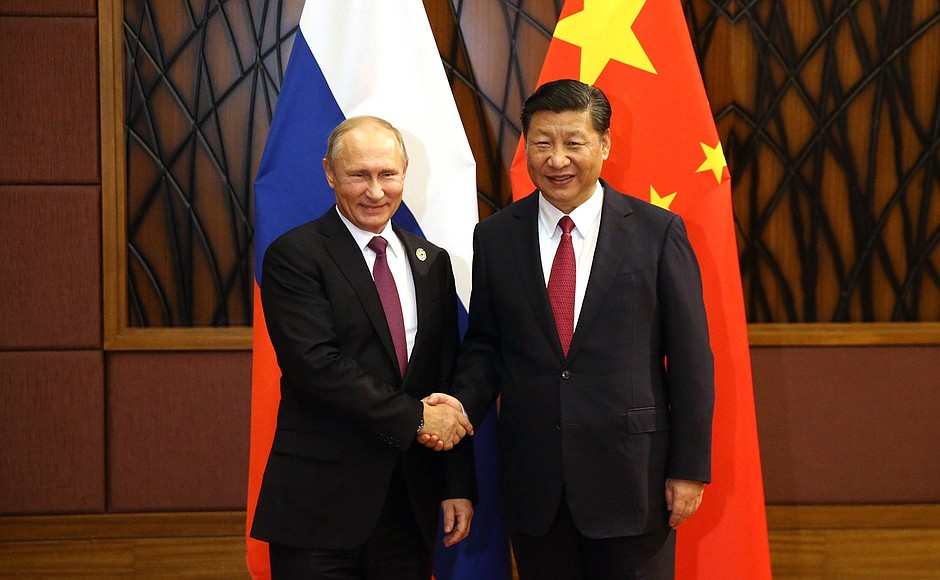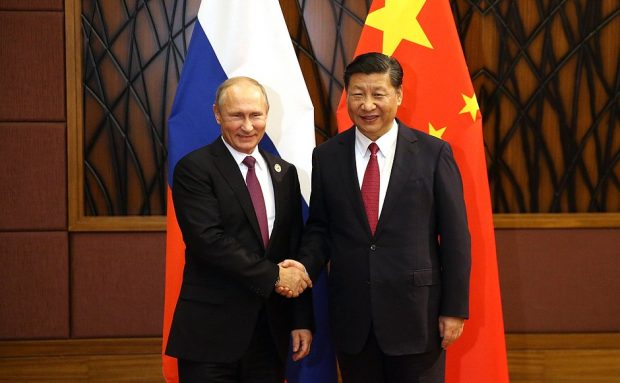
China, Russia bound to further expand collaboration
The Belt and Road Initiative (BRI), since it was proposed almost six years ago, has witnessed a stretching network of friends, enabling China to forge partnerships all over the world and enjoy great popularity with its “Chinese solutions”. As the Silk Road spirit, with peace and cooperation, openness and inclusiveness, mutual learning and mutual benefit at its core, earns more and more recognition and support around the world, the BRI has grown into the global public goods with the widest coverage and richest connotation and injected new momentum into the global economy.
Russia, as a significant supporter of the international cooperation under the BRI framework, has witnessed how the BRI has optimized the existing cooperation framework between China and Russia, and thus greatly enriched bilateral relations and broadened bilateral cooperation. China-Russia cooperation has been yielding new breakthroughs unceasingly. Last year, bilateral trade amounted to an all-time record of $107.06 billion, representing the greatest growth among top ten trading partners of China. Bilateral cooperation on major projects in such fields as energy sources, nuclear energy, aviation and space has moved into the fast lane of development. The first ship of liquefied natural gas (LNG) from the Yamal LNG project in Arctic Russia was supplied to China in July 2018, and the second line for the China-Russia oil pipeline was put into commercial use in January 2018, while the China-Russia east-route natural gas pipeline is expected to provide natural gas for China as scheduled. Besides, China and Russia have signed a series of cooperation agreements concerning the nuclear field, and are pushing forward the joint research and development of wide-body long-haul passenger planes.
China and Russia have been intensifying connectivity over the years, which can be illustrated by the construction of a bunch of transportation infrastructure projects, including the first cross-border railway bridge and the first cross-border highway bridge between the two nations – the China-Russia Tongjiang Railway Bridge that links the city of Tongjiang in northeast China’s Heilongjiang Province with Nizhneleninskoye in Russia, and the cross-border highway bridge connecting the Chinese city of Heihe in Heilongjiang Province and Blagoveshchensk of Russia. More such projects as the international transport corridors “Primorye-1” and “Primorye-2” connecting the Chinese provinces of Heilongjiang and Jilin with Primorsky of Russia, the Mongolia-China-Russia economic corridor, and the China-Europe freight trains are under progress as well.
In addition, trade in agriculture production and services, cross-border e-commerce, Arctic development, and high-tech cooperation emerge as new growth drivers. Both countries have braced for flourishing people-to-people and cultural exchanges over the past six years, which can be evidenced by a great number of large-scale state-level events, including the Year of Tourism, the China-Russia Youth Friendly Exchange Year, the China-Russia Media Exchange Year, and the year of China-Russia local cooperation and exchange.
Meanwhile, the two nations have enriched cultural exchanges and bolstered the two peoples’ understanding and interest in each other’s culture, by hosting film festivals in each other’s territory, translating and publishing books, and encouraging interactions between museums, theaters, and the circle of fine arts. The forum themed cultural interactions and the China-Russia Cultural Market have become the flagship projects between the two countries concerning the cultural exchanges under the BRI. The BRI has been an important backbone for the two nations’ endeavours to enhance international collaboration.
As permanent members of the UN Security Council and important member states of many international organizations, China and Russia, when developing their ties, have been committed to regional and international peace and stability, as well as the common development of mankind. China has launched fruitful multilateral cooperation with Russia and other counties along the BRI routes, including the establishment of organizations such as the Asian Infrastructure Investment Bank (AIIB), the Silk Road Fund, and the BRICS New Development Bank (NDB). Those decisions delivered important contributions to the development of the Eurasian region. Past experience has demonstrated that the BRI conforms to the trend of the times, agrees with the common aspiration of the two nations to realize shared development by win-win cooperation, and has brought new opportunities for deepening mutually beneficial cooperation.
This year marks the 70th anniversary of the establishment of the diplomatic ties between China and Russia. The two nations will take the occasion as a new starting point to strengthen policy communication and strategy integration, deepen pragmatic cooperation in various fields, and further consolidate the traditional friendship, so as to jointly build the BRI into an international cooperation platform with the aim of boosting global economic growth and constructing a community with a shared future for mankind.
By Li Hui, Chinese Ambassador to Russia
(People’s Daily)



